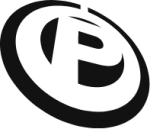Digital marketing is a labyrinth full of all sorts of industry jargon. Some of it can get quite technical and confusing. At Digital Ladder, we want our clients to feel in control. We want you to feel comfortable with what we’re doing with your brand. That’s why we’ve compiled the ultimate digital marketing glossary to help us get on the same page.
301 redirect
A 301 redirect is a permanent redirect from an old URL to a new URL. It’s a method used to keep the drive of traffic when a page or URL has been updated or websites have been redesigned.
404 error
404 errors are displayed on a user’s screen when a URL cannot be found. This can also be known as a broken page. If the page is being permanently deleted, a 404 redirect will say that the page no longer exists.
A/B testing
A/B testing is when you take two versions of something such as ad copy and test them against each other to see which one your audience responds better to. A/B testing is something you should be carrying out continually to find the most beneficial digital marketing approach.
Ad
An ad is a paid-for communication used to target potential audiences through different mediums.
Ad fatigue
Ad fatigue occurs when you over-expose your audience to the same advert. They become bored and stop paying attention.
Algorithm
An algorithm is a set of rules set by platforms and search engines. They use these rules to decide what website a user will see first. The decision is made based on a number of factors, depending on the platform.
ALT-text
ALT-text is a word or short phrase used to tag an image. This tag will describe what the image contains to the search engine bots, who are unfortunately blind.
Anchor text
Anchor text is the clickable text displayed throughout a website. Usually blue in colour and underlined, it links to other sites or pages. Using anchor text throughout your site to link to your other pages is a good way to improve your internal linking.
Audit
An audit is a full look at the performance of your site. Auditing your site allows you to explore every aspect of it. Audits are usually done for SEO purposes.
Backlinks
Backlinks are hyperlinks from one site to another. The more backlinks you have the higher your website will rank. Links that come from reputable sites will improve the authority, searchability and power of your site.
Blog
Blogs are websites or web pages made up of either personal or informative content. They’re used to talk about relevant topics and are targeted at a particular audience.
Bots
Bots are web crawlers. Often known as Google bots or spiders, they crawl through new and updated web pages, analysing their content. When a bot lands on your webpage, it scans its content and then adds it into the search engine’s index, ready to be pulled out if someone searches for it.
Bounce rate
The bounce rate is the percentage of users who leave the site after viewing only one page and not carrying out an action. If the bounce rate is particularly high for certain pages, you may want to adjust the page to make it more relevant.
Call to action
This is the particular action you want your audience to carry out. Terms such as ‘contact us’ and ‘learn more’ are often used as calls to action (CTAs).
Channel
The channel is the outlet an advertiser uses to target their audience. Common channels are Google, emails, and social media.
Clicks
A click refers to the frequency an ad is clicked on by users when it appears in their search results.
Click-through rate
The click-through rate is the percentage of users who will click on the ad when they’re exposed to it.
Code
Code acts as a set of instructions that make up a website and tell the website how it should perform. Any errors within the code can cause problems with your site, including shutting the entire site down.
Conversion
A conversion is when a user carries out the action intended by the ad. This could be clicking on an ad, filling out a form etc. With paid advertising, a company’s conversions help them assess how effective their advertising has been.
Conversion rates
A conservation rate is the percentage of users that convert from an ad after clicking on it.
CPC
Cost per click, or CPC, is the amount a company pays per click on their paid-for ad.
CPL
Cost per lead, or CPL, is the amount a company pays per lead from the paid-for ad.
Crawl
This is the process carried out by a bot when scanning website pages. Crawling is carried out when a site is being indexed or when a user uses a search engine.
Demographic
A demographic is used to determine your target audience. A demographic is usually made up of a smaller group of individuals and is usually categorised by age, gender, location, occupation, ethnicity and race.
Domain
A domain is the name of the site that sits within the URL. It is used to identify the webpage.
Domain authority
The domain authority or DA is based on the age, size, and popularity of a site. It is a number between 0-100. The higher the number, the higher the chances of the site ranking.
Dofollow link
A dofollow link is a link between two websites with different domains. If a site includes a dofollow link to your site, you will gain more reputability, your DA will improve and so will your keyword rankings.
Google Analytics
Google Analytics is a platform run by Google that can be used to track and measure how a user interacts with your site. You can view your bounce rate, session duration, and the device a user viewed the site on.
Google Search Console
Google Search Console is a platform run by Google that can allow you to monitor and maintain your website’s presence.
Google Tag Manager
Google Tag Manager is a platform run by Google that can be used to manage all the tags for a website. You can add, change and update tags on your website without having to enter the backend of the site.
H tags
Header tags, or H tags, are titles within a page that stand out amongst the other text. You can get H1s, H2s, H3s, and so on. They’re used in a descending order to display the hierarchy of the titles and subtitles. Google bots will read them to get a sense of what your website content is about.
HTML
Hypertext Markup Language, or HTML, is a coding language used to make a website.
Impressions
An impression is the number of times your ad has been seen by a potential customer. The user doesn’t need to interact with the ad to consider it an impression, it simply has to appear to them on their search results or through advertising.
Internal link
Internal links link between one page and another where the pages use the same domain. Internal links can keep users interested and increase the session duration.
Keywords
In Search Engine Optimisation (SEO), a keyword is a word or phrase that help create a site’s metadata. They help describe what is on the website. Keywords should help users find a webpage, depending on their query.
Landing page
A landing page is a page that a user first lands on when they visit the website. They could have landed on this page through a search engine or an ad.
Leads
A lead is a conversion from an ad that will tell your company information about your potential customers and audience.
Meta description
A meta description is a short summary as a tag under the HTML of a webpage. It describes what the webpage is about. If you make the most of this tag, search engines will scan it to check its relevance to a user’s search.
Meta title
Meta titles are tags in the HTML of a webpage that act as page titles. When optimised, search engines will read these tags first, before moving onto the meta description to help decide whether the webpage will be relevant for the user.
Metadata
Metadata is often in tags and it includes the descriptions and keywords used to describe a web page’s content. The two most common types of metadata are meta descriptions and meta titles.
Nofollow
A nofollow link is a link that does not pass authority onto the webpage it’s linking to, unlike a dofollow. This kind of link will not improve a page’s placement in the SERPs.
Organic traffic
Organic traffic is when a user finds the page through an organic route like a search engine. These users are coming to the website uninfluenced by paid ads.
Page Speed
The page speed is the time it takes a web page to load on a browser or mobile device. A slow-loading web page can affect how well a bot can crawl the site. If your web pages are particularly slow, it could increase your bounce rate. Large images are often the cause of page speed issues.
Page views
Page views measure the number of times a user has visited your webpage. Unique users and regular visitors are all counted as page views.
PPC
PPC or the Pay-Per-Click model is when companies only pay for an ad when a user clicks the ad. Search engines and social media sites are the main locations where this model is offered, with Facebook and Google being the most popular.
PR
PR or Public Relations is when a team creates a positive reputation for a business through unpaid means. PR used to be focused on traditional forms of media like newspapers and TV, but now there is a lot more digital PR using bloggers and social media.
Query
A query, often referred to as a search term, is a couple of words or phrases a user enters into a search engine. After searching the query, the search engine will provide the user with web pages it feels are the most relevant to the user’s search.
Reach
Reach is the number of views your content receives over a specified period of time. There is paid reach, which is when a business pays their ad to have better visibility. There is also organic reach which heavily relies on SEO.
Search engine
A search engine is a platform or software that uses the internet to search for a user’s query and display a SERP to them.
SEO
SEO or Search Engine Optimisation is the process of optimising webpage content in order to increase a site’s organic visibility and increase traffic. There are many tasks that fall under the SEO umbrella, including researching keywords, implementing backlinks, and optimising web page copy. All will increase the likelihood of the page appearing on a SERP when a user enters a query into the results page.
SERP
The SERP or Search Engine Results Page is what will display after a user has entered their query into the search engine. This will be formulated by the search engine based on what content it thinks will be most relevant to the user. These results can consist of both ads and organic searches.
Sitemap
A sitemap is a list of the pages within a site. They help search engines index the site and they help users to navigate it.
Spider
A spider is another name for a bot. It is a web crawler that adds pages to a search engine’s index and helps users to find the most relevant search results.
Tag
A tag can receive and collect data from user experiences with web pages.
URL
A URL or Uniform Resource Locator is what is entered or displayed in the browser address bar. It is used to identify the location of a webpage on the internet. It can also be known as a web address.
Web page
A web page is a page that sits within a website. You will usually be able to navigate to this page through an index or menu.
Website
A website is an address on the internet that stores a collection of web pages. The website will host information and data and can usually be accessed by anyone.
WordPress
WordPress is an application where businesses create and host websites. It is a preferred choice as it is simple to maintain and add content to after creation.
Strategic digital marketing across the UK
For more information about what digital marketing can do for your business, get in touch with the experts. Digital Ladder offer the full digital marketing experience to take your business to the next level.
It’s time to build.





